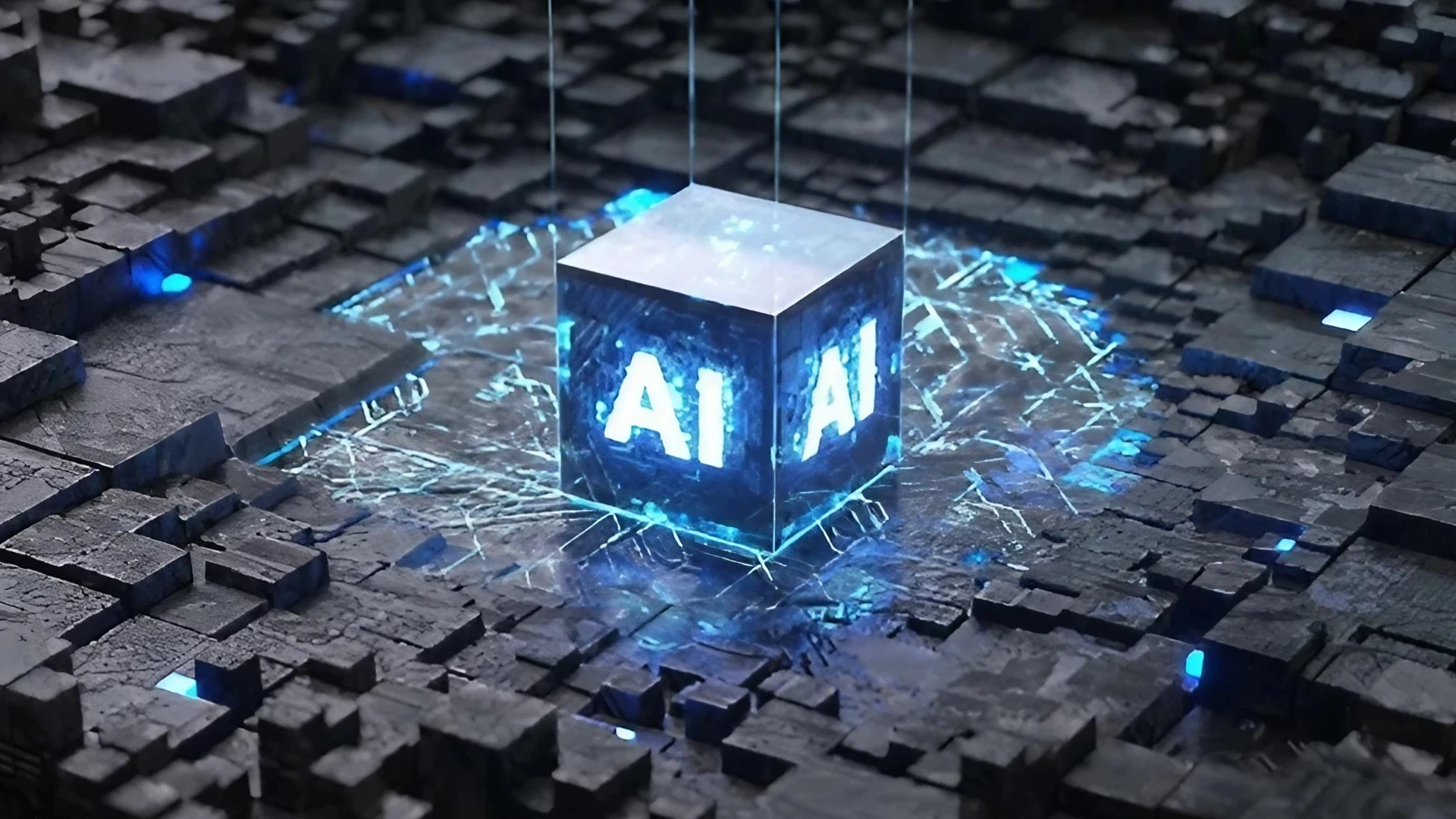Introduction
Artificial Intelligence: A Year of Remarkable Progress
In the ever-evolving landscape of artificial intelligence, it’s essential to take stock of the advancements and changes that shape our digital future. As we mark the one-year anniversary of Chat GPT, we find ourselves at a pivotal moment in the AI industry. This chapter provides an overview of the significant developments within the past year, celebrating milestones and progress that have pushed the boundaries of what AI can achieve.
Overview of Recent Developments in AI
The Significance of Chat GPT’s First Anniversary
The anniversary of Chat GPT’s launch is more than just a date on the calendar; it symbolizes a year of groundbreaking achievements. Chat GPT has emerged as a prominent milestone in natural language processing, demonstrating the potential of AI-powered language models. It has become a versatile tool, impacting various sectors from content creation to customer support.
Milestones and Improvements
Over the past year, Chat GPT has undergone significant improvements. These enhancements have not only expanded its capabilities but have also made it more user-friendly. Some noteworthy improvements include:
- Enhanced Language Understanding: Chat GPT has become more proficient in understanding context, nuances, and user intents, leading to more coherent and contextually relevant responses.
- Reduced Biases: Efforts have been made to mitigate biases in responses, aligning with OpenAI’s commitment to ethical AI development.
- Expanded Languages: Chat GPT’s multilingual support has been extended, making it accessible to a more diverse global audience.
- Integration with Tools: Integration with various platforms and applications has made Chat GPT a valuable asset in diverse industries.
Key Leadership Changes at OpenAI
Sam Altman’s Return as CEO
In the world of AI research and development, leadership plays a crucial role in setting the direction and vision. Sam Altman, a prominent figure in the AI community, made headlines with his official reinstatement as the CEO of OpenAI. His return brings with it a wealth of experience and a commitment to advancing the field of artificial intelligence.
Strengthening the Organization
Alongside Sam Altman’s return, OpenAI has made other key appointments that signify its commitment to excellence and innovation. These appointments include top-tier talent in research, ethics, and business development, further solidifying OpenAI’s position as a global leader in AI research.
As we journey through this article, we will delve deeper into various aspects of AI’s evolving landscape, from the delayed launch of the GPT Store to the intriguing speculations surrounding the Q* model. Stay tuned to explore the dynamic world of AI.
The GPT Store and Its Delay
In the ever-evolving landscape of artificial intelligence, the GPT Store stands as a beacon of innovation, promising access to cutting-edge AI models and services. However, as with any ambitious endeavor, delays can occur, and in this chapter, we will delve into the intricacies surrounding the delay in the launch of the GPT Store.
Introduction to the GPT Store
A Vision of AI Accessibility
The GPT Store, conceived as an integral part of OpenAI’s mission, aims to democratize access to advanced AI technologies. It envisions a marketplace where individuals and businesses can harness the power of AI models for various applications, from content generation to problem-solving. The GPT Store was anticipated to be a game-changer, but its journey has been delayed.
Delay in GPT Store Launch
A Change in the Timeline
The AI community and enthusiasts worldwide were eager to explore the GPT Store’s offerings, but a shift in the timeline has led to postponement. This delay has raised questions and curiosity among stakeholders, prompting us to examine its reasons and potential implications.
Reasons for the Delay
Several factors contributed to the decision to delay the launch of the GPT Store. These factors include:
- Technical Challenges: Developing a robust and user-friendly marketplace for AI models and services is no small feat. Addressing technical complexities and ensuring a seamless user experience have been priorities.
- Quality Assurance: OpenAI is committed to delivering AI models that meet high quality standards and ethical considerations. Rigorous testing and validation processes have been integral to the delay.
- User Safety: The safety of users and the responsible use of AI are paramount. Implementing safeguards to prevent misuse and unintended consequences has added time to the development cycle.
Implications of the Delay
While the delay undoubtedly disappoints those eager to explore the GPT Store, it also carries potential benefits. The additional time allows OpenAI to fine-tune the platform, ensuring that it delivers on its promises of accessibility, usability, and safety. The delay may result in a more robust and secure marketplace for AI solutions.
As we navigate through the chapters of this article, we will continue to unravel the intricacies of the AI landscape, exploring topics ranging from leadership changes at OpenAI to the legal perspectives on copyrighting AI-generated images. The journey through the world of AI is filled with twists and turns, and the GPT Store’s delay is just one facet of this dynamic field.
Speculations About Q* Model
In the ever-evolving realm of artificial intelligence, speculation often swirls around the emergence of new models and technologies that have the potential to reshape the landscape. In this chapter, we dive into the intriguing world of speculations surrounding the Q* model, which has ignited curiosity and debate among AI enthusiasts and experts alike.
Rumors Surrounding Q* Model
A Whisper in the AI Echo Chamber
The AI community is no stranger to rumors and speculations, and the Q* model is no exception. Whispers of this enigmatic model have been circulating, with tantalizing hints of its capabilities and implications. Let’s explore what the buzz is all about.
The Cryptic Origins
The origin story of the Q* model remains shrouded in mystery. It is said to be the brainchild of a clandestine group of researchers, working silently in the shadows of the AI world. Some speculate that it could be a revolutionary leap in AI capabilities, potentially unlocking new frontiers in natural language understanding and generation.
Potential Implications
The mere existence of the Q* model raises a multitude of questions. If the rumors hold true, what could this mean for AI-powered applications? Could it lead to more human-like conversational AI or significantly enhance language translation and generation? The implications, if confirmed, are nothing short of transformative.
Sam Altman’s Response
The CEO’s Perspective
To shed light on the Q* model speculations, we turn to Sam Altman, the CEO of OpenAI, an authority figure in the AI landscape. Mr. Altman’s stance on the matter carries significant weight, as his insights can provide clarity amidst the fog of rumors.
An Enigmatic Smile
When confronted with questions about the Q* model, Sam Altman has maintained an enigmatic smile, neither confirming nor denying its existence. This cryptic response has only fueled further speculation, leaving the AI community in suspense.
Awaiting the Unveiling
While we may not have definitive answers regarding the Q* model, Sam Altman’s response suggests that there might be more to this story than meets the eye. As we continue our exploration of AI developments in subsequent chapters, we can only hope for more insights into this intriguing enigma.
As we delve deeper into the multifaceted world of artificial intelligence, the Q* model speculations serve as a reminder of the ever-present potential for innovation and transformation. Stay tuned for more revelations and insights as we navigate the intricate web of AI advancements.
Advancements in AI-Generated Video Tools
The digital realm is undergoing a transformation, and at the forefront of this evolution are AI-generated video tools. In this chapter, we delve into the exciting world of these tools, exploring their significance and the recent advancements that are pushing the boundaries of creativity.
Introduction to AI-Generated Video Tools
A New Era of Content Creation
As the demand for engaging and visually appealing content continues to surge, AI-generated video tools have emerged as game-changers in the world of digital media. These tools harness the power of artificial intelligence to assist creators in crafting compelling videos.
The Significance of AI in Video Creation
The integration of AI in video production offers a range of benefits, from streamlining the editing process to generating unique visual effects. This innovation has opened doors to both amateur and professional content creators, democratizing the world of video production.
Empowering Creativity
AI-generated video tools empower creators to bring their visions to life with greater ease and efficiency. By automating repetitive tasks and offering creative suggestions, these tools free up valuable time for the artistic aspects of content creation.
Notable Features and Platforms
A Closer Look at Advancements
The AI-generated video landscape is constantly evolving, with various platforms and tools pushing the envelope. Let’s explore some of the notable features and innovations introduced by key players in this space.
P Labs: Redefining Video Editing
P Labs, a prominent player in AI-generated video tools, has introduced a range of groundbreaking features. These include real-time scene suggestions, automated color grading, and even AI-driven storytelling assistance. Creators can now transform their raw footage into captivating narratives with remarkable ease.
Runway ML: Democratizing Visual Effects
Runway ML has made waves by democratizing visual effects with AI. Creators, regardless of their technical expertise, can now add stunning effects to their videos. From holographic overlays to dynamic background replacements, Runway ML offers a plethora of creative possibilities.
Beyond Editing: The Future of AI-Generated Video
While the current focus lies in video editing, the future of AI-generated video tools is limitless. As AI continues to advance, we can anticipate even more sophisticated features, such as AI-authored scripts and virtual cinematographers, redefining the boundaries of what’s possible in content creation.
As we journey through the realm of AI-generated video tools, it becomes evident that we stand at the threshold of a new era in content creation. The fusion of human creativity and artificial intelligence promises to reshape how we tell stories and share experiences through the medium of video.
Amazon’s Internal AI Tools
In the ever-evolving landscape of artificial intelligence, corporations are seeking innovative ways to harness the power of AI for internal use. Amazon, one of the tech giants, has embarked on a transformative journey by introducing a suite of internal AI tools. In this chapter, we will delve into Amazon’s initiatives and explore the specific tool known as “Amazon Q,” designed for data-driven decision-making within the company.
Amazon’s Introduction of AI Tools
A Vision for Enhanced Efficiency
Amazon’s commitment to staying at the forefront of technological innovation is well-established. In recent years, the company has strategically integrated artificial intelligence into its operations, aiming to enhance efficiency, optimize processes, and foster data-driven decision-making.
The Significance of Internal AI Tools
The adoption of AI tools within Amazon’s internal ecosystem represents a significant shift in corporate strategy. It underscores the importance of data-driven insights in a highly competitive global market. These tools empower Amazon to leverage its vast data resources effectively.
A Multifaceted Approach
Amazon’s suite of internal AI tools extends across various domains, including logistics, customer service, and cloud computing. This multifaceted approach allows the company to address diverse operational challenges with tailored AI solutions.
Amazon Q for Data-Driven Decision-Making
Unveiling Amazon Q
At the heart of Amazon’s internal AI endeavours lies “Amazon Q,” a tool designed to revolutionize data-driven decision-making. This innovative solution represents a crucial component of the company’s strategy to maintain its competitive edge.
The Power of Predictive Analytics
Amazon Q leverages advanced predictive analytics to analyze vast datasets rapidly. It provides actionable insights that guide decision-makers in optimizing supply chain management, forecasting customer demand, and enhancing operational efficiency.
Real-Time Decision Support
One of the standout features of Amazon Q is its ability to offer real-time decision support. This means that even in the fast-paced world of e-commerce, Amazon can respond swiftly to changing market dynamics, ensuring a seamless customer experience.
A Glimpse into the Future
As Amazon continues to refine its AI tools and expand their capabilities, we can expect further innovations in the realm of data-driven decision-making. The company’s commitment to staying at the cutting edge of technology promises to drive continuous improvement in its operations.
In this chapter, we’ve explored Amazon’s visionary approach to internal AI tools and delved into the remarkable capabilities of “Amazon Q.” As the corporate world increasingly relies on data-driven insights, Amazon’s innovations in this space serve as a testament to the transformative potential of artificial intelligence within large organizations.
Microsoft’s Integration of DALL·E 3
In the ever-evolving world of artificial intelligence, the integration of cutting-edge technologies into everyday applications continues to drive innovation. Microsoft, a global tech leader, has made significant strides by seamlessly integrating the powerful DALL·E 3 model into Microsoft Paint. In this chapter, we will explore the significance of DALL·E 3 and how its integration has transformed the world of digital art creation.
Introduction to DALL·E 3
Unveiling DALL·E 3
DALL·E 3, developed by OpenAI, is a remarkable AI model that takes the concept of generative art to a new level. Building upon the success of its predecessors, DALL·E 3 can create stunning images from textual descriptions, allowing users to bring their imagination to life.
The Power of Text-to-Image Generation
What sets DALL·E 3 apart is its ability to interpret textual descriptions and generate intricate images accordingly. Whether it’s fantastical creatures or surreal landscapes, this AI model can transform words into visually captivating artworks.
Unlocking Creativity
The integration of DALL·E 3 into Microsoft Paint has opened up new avenues for creativity. Artists, designers, and hobbyists now have a powerful tool at their disposal to effortlessly translate their ideas into digital art, without the need for advanced artistic skills.
Integration with Microsoft Paint
Making Art Accessible
Microsoft’s decision to integrate DALL·E 3 into the user-friendly Microsoft Paint application represents a significant step toward democratizing AI-generated art. This integration ensures that users of all skill levels can explore the potential of AI-powered creativity.
A Seamless Experience
The seamless integration allows users to access DALL·E 3’s capabilities directly within Microsoft Paint’s familiar interface. Users can input text descriptions, and the AI model will promptly generate corresponding images, ready for further customization.
Fostering Innovation
By bringing DALL·E 3 to the fingertips of millions of users, Microsoft has fueled innovation in digital art creation. This integration is not just about convenience; it’s about empowering individuals to push the boundaries of their artistic expression.
In this chapter, we’ve ventured into the realm of AI-driven artistry with Microsoft’s integration of DALL·E 3 into Microsoft Paint. The fusion of cutting-edge technology and creative tools promises to revolutionize how we approach digital art, making it more accessible and inspiring than ever before.
Copyrighting AI-Generated Images
The realm of artificial intelligence has ushered in a new era of creativity and innovation, giving rise to AI-generated images that blur the lines between human and machine-generated artistry. In this chapter, we delve into the intriguing legal landscape surrounding the copyrighting of AI-generated images, exploring the contrasting perspectives of Western and Chinese courts.
Western Courts’ Stance
Navigating Copyright in the West
In Western jurisdictions, the question of whether AI-generated works can be granted copyright protection has been a topic of significant debate. The prevailing stance in many Western countries is that copyright protection is typically reserved for human creations, rooted in the idea of human authorship.
The Human Touch
Western legal systems traditionally emphasize the role of human creativity and intention in the creative process. As a result, AI-generated works are often regarded as lacking the essential human touch required for copyright protection.
The Need for Clarity
This perspective has prompted calls for legislative clarity regarding the copyright status of AI-generated works. Legal experts and policymakers are grappling with the need to adapt copyright laws to accommodate AI-driven creativity while preserving the rights of human creators.
Chinese Courts’ Ruling
A Different Perspective in China
In contrast to the Western stance, Chinese courts have taken a more progressive approach towards AI-generated works and copyright protection. Recent rulings in China have recognized the copyright eligibility of AI-generated content.
A Paradigm Shift
Chinese courts have acknowledged that AI algorithms, while devoid of human consciousness, can still produce original and creative works. This recognition represents a paradigm shift in the legal treatment of AI-generated content.
Implications for the Future
The Chinese approach has significant implications for the global landscape of AI-generated art and intellectual property. It challenges the traditional notions of authorship and opens the door to broader copyright protection for AI-driven creations.
As we navigate the complex terrain of copyrighting AI-generated images, it is clear that the legal landscape is evolving. Western courts grapple with the fundamental question of authorship, while Chinese courts lead the way in recognizing AI’s creative potential. These developments highlight the need for ongoing discussions and adaptations in copyright law to ensure that AI-driven creativity is appropriately protected while respecting the rights of human creators.
Conclusion
In this comprehensive exploration of the dynamic landscape of artificial intelligence, we’ve embarked on a journey through the ever-evolving realm of AI advancements, leadership transitions, legal interpretations, and creative innovations. As we draw this article to a close, it’s essential to recap the key developments and consider the future implications of the discussed topics.
Recap of Key Developments
A Year of AI Advancements
We commenced our journey with a reflection on the significance of Chat GPT’s one-year anniversary. This milestone marked a year of relentless innovation, resulting in substantial improvements and new features that have shaped the AI landscape.
Leadership Unveiled
Delving into the leadership dynamics at OpenAI, we discussed Sam Altman’s return as CEO and highlighted other pivotal appointments within the organization. These changes carry the potential to steer OpenAI’s vision and strategy in exciting new directions.
The GPT Store Dilemma
Our exploration continued with an introduction to the GPT Store and the complexities surrounding its launch delay. We unveiled the reasons behind this decision and its implications for the AI community.
Speculations and Responses
We ventured into the intriguing world of speculations about the qar model, shedding light on the rumors and Sam Altman’s response. The uncertainty surrounding this mysterious model has kept the AI community abuzz with anticipation.
AI-Generated Creativity
Turning our attention to AI-generated video tools, we witnessed the rise of creative capabilities powered by AI. Notable features and platforms such as P Labs and Runway ML have unlocked new dimensions of creativity, shaping the future of content creation.
Amazon’s AI Initiatives
Amazon’s pursuit of AI excellence was explored through its internal AI tools and, in particular, Amazon Q for data-driven decision-making. These initiatives underscore the importance of AI in modern businesses.
The Artistry of DALL·E 3
Our journey reached artistic heights with an introduction to DALL·E 3 and its integration into Microsoft Paint. This fusion of AI and creativity has democratized artistry, allowing users to generate unique, AI-driven artworks.
Copyright in AI
We navigated the complex terrain of copyrighting AI-generated images, dissecting the contrasting stances of Western and Chinese courts. While Western courts grapple with the question of authorship, Chinese courts have embraced AI’s creative potential.
Future Implications
A Vision of Tomorrow
As we peer into the future, the implications of these developments are profound. The AI landscape will continue to evolve, introducing innovations that challenge our understanding of creativity, leadership, and the law.
Staying Informed
In this fast-paced AI world, staying informed is paramount. The advancements we’ve witnessed are just the beginning, and the possibilities are limitless. We encourage our readers to remain engaged with AI-related news and innovations, for the journey has only just begun.
In conclusion, our exploration of AI’s recent developments has unveiled a captivating tapestry of innovation, leadership, creativity, and legal nuances. The future beckons with promise, and as AI enthusiasts, we stand on the precipice of remarkable possibilities. Stay informed, stay inspired, and stay connected to the ever-evolving world of artificial intelligence.





